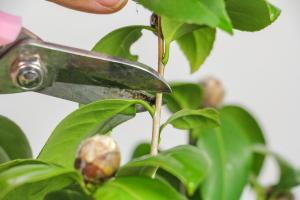How to Protect Newly Planted Trees from Animals
Planting trees is a great way to contribute to the environment, as they help reduce air pollution and provide shade. However, keeping trees safe from animals can be a big challenge. Young trees are particularly vulnerable to animals, which may eat their leaves, roots or trunks, and damage their growth. In this article, we will look at some effective ways to protect newly planted trees from animals.
Choose the Right Location
The first step to protecting your newly planted trees is to choose the right location. Avoid planting trees in areas that are easily accessible to animals, such as near a forest or a park where deer or squirrels may roam. Plant trees in areas that are closer to your home or are fenced to limit access by animals.
Use Tree Guards
For added protection, use tree guards to cover the trunks of your newly planted trees. Tree guards are ideal for keeping small animals like rabbits, mice, and voles from nibbling on young tree bark. You can use homemade tree guards made from old hardware cloth or choose from a variety of commercial tree guards available in garden stores. Be sure to remove the tree guards once your trees grow bigger.
Install Fencing
If you have larger animals like deer that may pose a threat to your newly planted trees, installing a fence around the area can help keep them out. Fencing can be made from different materials like wire, metal or wood. Make sure the fence is at least 8 feet tall to keep the deer out. Using electric fencing to deter animals is another option.
Use Repellents
Another way to protect your newly planted trees is to use repellents. There are different types of repellents available, like granular or spray repellents, that can effectively keep animals away from your trees. These repellents are often made from natural ingredients and are safe to use around pets and humans. To ensure the best results, apply the repellent on your trees regularly.
Keep the Area Clean
Keeping the area around your newly planted trees clean can also help protect them from animals. Remove all debris and brush from around the area to prevent animals from using them as hiding spots. Trim back any nearby shrubs or bushes that can provide cover for animals. Also, keep the area free of fallen fruit, which can attract animals like squirrels.
Conclusion
Newly planted trees require extra care to protect them from animals that may harm or eat them. Choosing the right location, using tree guards or fencing, applying repellents and keeping the area clean are all effective ways to protect your newly planted trees. By taking these steps, you can ensure the growth and health of your trees and contribute to a healthier environment.

 how many times do yo...
how many times do yo... how many planted tre...
how many planted tre... how many pine trees ...
how many pine trees ... how many pecan trees...
how many pecan trees... how many plants comp...
how many plants comp... how many plants can ...
how many plants can ... how many plants and ...
how many plants and ... how many pepper plan...
how many pepper plan...





























